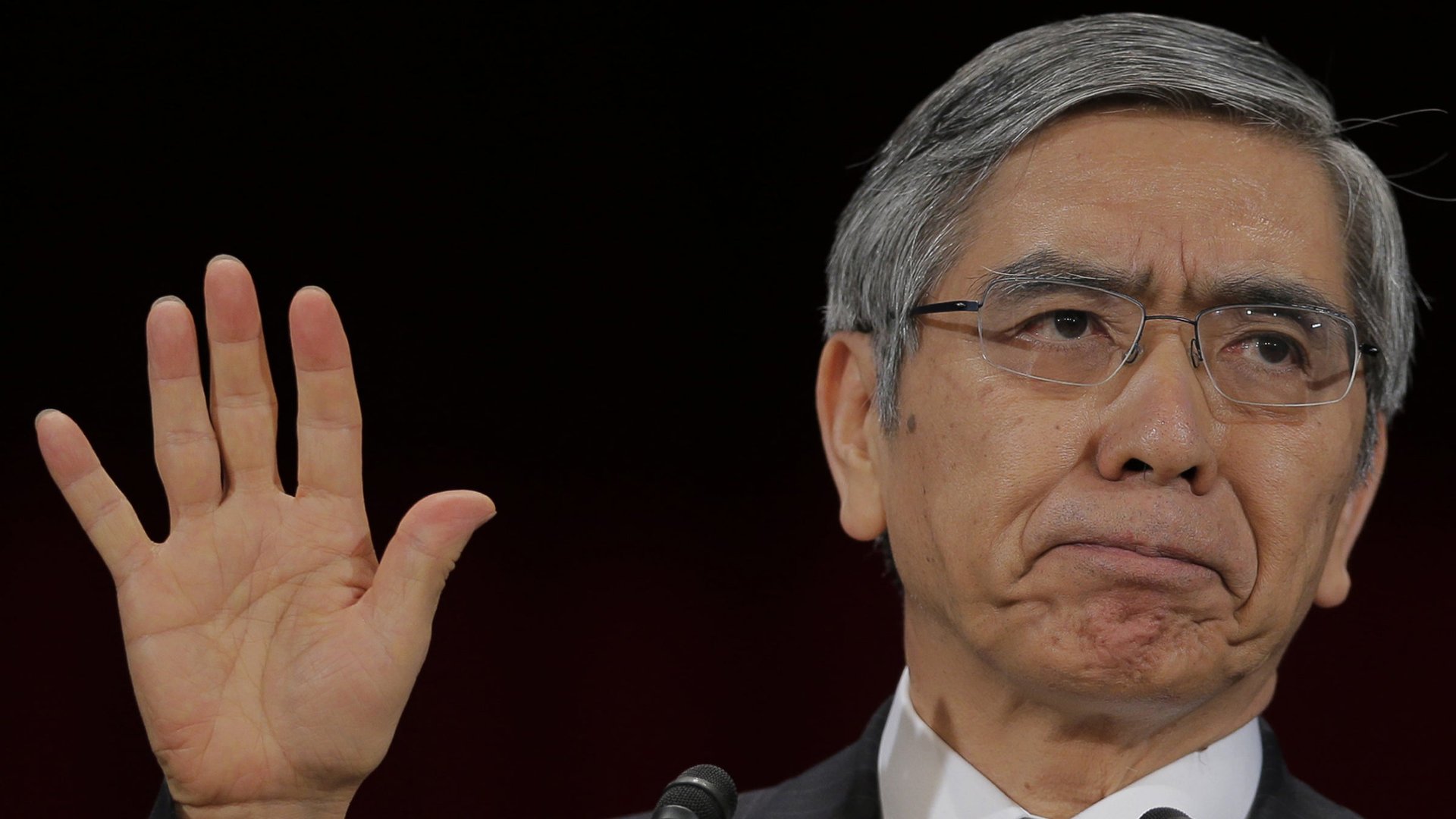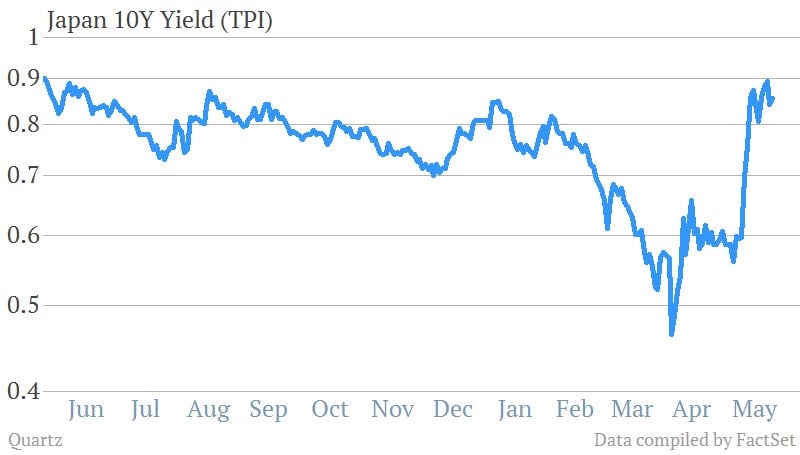A rapid rise in rates foils Abenomics—and even the BoJ is worried about it
Abenomics, as the economic policies of prime minister Shinzo Abe are known, might be facing its first real roadblock. Minutes from the April 26 Bank of Japan (BoJ) policy meeting show that “a few members” worried that markets would find the purchase of government bonds and the focus on creating inflation to be “contradictory” (pdf, p.9); one worried about continued “instability.”


Abenomics, as the economic policies of prime minister Shinzo Abe are known, might be facing its first real roadblock. Minutes from the April 26 Bank of Japan (BoJ) policy meeting show that “a few members” worried that markets would find the purchase of government bonds and the focus on creating inflation to be “contradictory” (pdf, p.9); one worried about continued “instability.”
These concerns seem to have been prescient. The yield on Japan’s 10-year government bond has doubled in the last month, even though the sheer volume of central bank’s bond-buying program should in theory be keeping yields down. Here’s a look at that trend:

To some this looks like a sign Abenomics is failing. Richard Koo of Nomura read the selloff as a sign that the BoJ can’t keep yields down ”no matter how many bonds it buys,” and that that could trigger a “loss of faith in the Japanese government.”
So what’s going on here? Recall that the BoJ is is buying assets, like bonds, to drive down their yields—i.e., interest rates. That’s supposed to encourage households and investors to take their money out of these low-yield bonds and put them into riskier assets, like stocks or real estate. But the ultimate goal—and the reason some BoJ members worried markets might find the whole thing contradictory—is to increase the amount of money in the system and stoke expectations of higher inflation, which tends to drive interest rates up.
The worry of monetary policy skeptics like Koo is that the recent spike in yields shows that, once inflation starts to pick up, the BoJ will be unable to keep the lid on rates. Not only would this hurt growth—it would make credit more expensive—but with Japan’s government debt at around 230% of GDP, higher rates would make the government’s debt-servicing costs spiral out of control.
Koo’s criticism is a legitimate one, but it also somewhat misses the point. A rise in rates is an inevitable consequence of a pickup in investment activity, relative to savings, and a sign of gathering inflationary pressure. So rising rates are a good thing, as long as they don’t rise too high. Even with the past month’s increase, they’re still exceptionally low.
Ultimately, the BoJ’s asset-purchase program is a bit like throwing giant quantities of damp wood on a fire and hoping that the fire can set the wood alight before the wood smothers the fire. Maybe the reason Kuroda’s not sweating the bond-yield bounce is that he hopes inflation will offset higher rates—i.e., that the fire will overcome the damp. In a speech yesterday, he acknowledged the risks (pdf, p.6), but said “Japan’s financial system as a whole seems to possess sufficient resilience against such shocks as a rise in interest rates and deterioration in economic conditions.” Some Japan analysts think he owed more of an explanation, though.